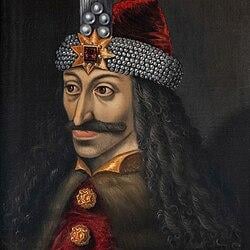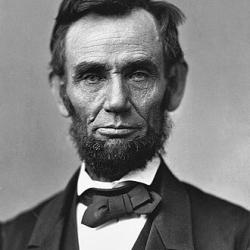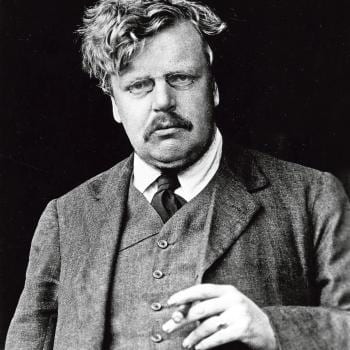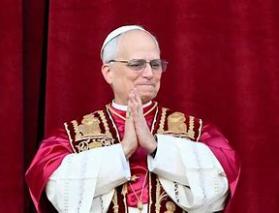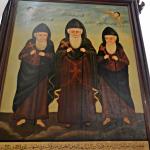Last Time In History
1775 Was A Heck Of A Ride Around The Sun
A Look Back At The Years 1775, 1784
A Decade After the Start of the War
1785
Angelika Kauffmann October 30, 1741 – November 5, 1807)
Pliny the Younger and His Mother at Miseno
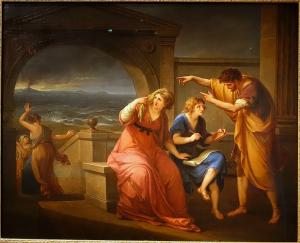
News of the World
- January 7 – Frenchman Jean-Pierre Blanchard and American John Jeffries travel from Dover, England to Calais, France in a hydrogen gas balloon, becoming the first to cross the English Channel by air.
- January 21 – The Treaty of Fort McIntosh is signed between the U.S. government and representatives of the Wyandotte, Delaware, Chippewa and Ottawa nations of Native Americans.
- July 6 – The United States dollar is unanimously chosen as the country’s money unit, the first time a nation has adopted a decimal currency.
- The Northwest Indian War (1785–1795), also known by other names, was an armed conflict for control of the Northwest Territory fought between the United States and a united group of Native American nations known today as the Northwestern Confederacy. The United States Army considers it the first of the American Indian Wars.
- 1785 – Basil Hayden Sr. was a Maryland Catholic who led a group of twenty-five Catholic families from Maryland into what is now Nelson County, Kentucky (near Bardstown). There Hayden donated the land for the first Catholic church west of the Alleghenies and the first Catholic church in what is now the Commonwealth of Kentucky what was called the Kentucky Holy Land. The Catholics got involved in making bourbon whiskey.
Arrivals
- January 4 – Jakob Grimm, Half of the Fairy Tale collecting brothers writing team. (died 1863)
Departures
- July 13 – Stephen Hopkins, Founding Father of the United States (b. 1707)
Publications Hot of the Press
- Rudolf Erich Raspe, anonymously – Baron Munchausen‘s Narrative of his Marvellous Travels and Campaigns in Russia
- Friedrich Schiller – Ode to Joy (An die Freude)
- James Boswell – The Journal of a Tour to the Hebrides with Samuel Johnson, LL.D.
- The first English translation of the Bhagavad Gita was published by Charles Wilkins in 1785.
Sanctifying Time
The cornerstone for the oldest Catholic parish in New York State, St. Peter’s Church, is laid. The first Mass celebrated a year later in 1786. Some notable parishioners over the year s include former slave venerable Pierre Toussaint, the first born American saint Elizabeth Ann Seton, and the notorious out law Billy The Kid.
The Sound of Music
- Carl Philipp Emanuel Bach
– 2 Sonaten, 2 Fantasien und 2 Rondos für Kenner und Liebhaber, Wq.59 - Johann Christian Bach
- 6 Violin Sonatas, Op.10 (posthumously)
- 2 Symphonies, Op. 18 (posthumously)
- Ludwig van Beethoven
– Three quartets for harpsichord, violin, viola, and cello, in E♭ major, D major, and C major, WoO 36
Moving On in the Century
- May 1, 1786 – Mozart‘s opera The Marriage of Figaro premieres in Vienna.
1786 – The Mysterious Nephilim Johann Friedrich Blumenbach (May 11, 1752 – January 22, 1840) considered to be a main founder of zoology declares that a series of large bones discovered near Lucerne, a city in central Switzerland, in the German-speaking portion of the country, were in fact remains that belonged to a mammoth. They were first discovered in 1577 and thought to be those of a nephilim from the antediluvian or pre-flood) period is the time period chronicled in the Bible between the fall of man and the Genesis flood narrative in biblical cosmology. The term was coined by Thomas Browne. Alleged discoveries of Nephilim remains have been a common source of hoaxing and misidentification. The Brown-Driver-Briggs Lexicon (1908) gives the meaning of Nephilim as “giants“, and holds that proposed etymologies of the word are “all very precarious”.
- January 11, 1787 – William Herschel discovers Titania and Oberon, two moons of Uranus.
- August 1 – St. Alphonsus Liguori, Italian founder of the Redemptorist Order (b. 1696) dies.
- 1787 – Father Demetrius Augustine Gallitzin joins the Catholic Church
Statehood Begins
State # 1 Delaware December 7, 1787
State # 2 Pennsylvania December 12, 1787
State # 3 New Jersey December 18, 1787
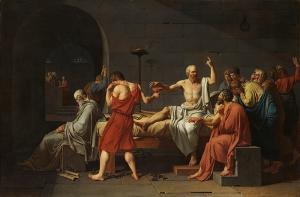
Jacques-Louis David metmuseum
State # 4 Georgia January 2, 1788
State # 5 Connecticut January 9, 1788
State # 6 Massachusetts February 6, 1788
State # 7 Maryland April 28, 1788
State # 8 South Carolina May 23, 1788
State # 9 New Hampshire June 21, 1788
State # 10 Virginia June 25, 1788
State # 11 New York July 26, 1788
- March 17, 1788 – George Washington had dinner at the home of Colonel John Fitzgerald at which the proposed construction of The Basilica of Saint Mary in Alexandria, VA.
- August 10, 1788 – Wolfgang Amadeus Mozart, in Vienna, completes his final symphony, now called the Symphony No. 41 in C Major, and nicknamed (after his death) The Jupiter.
- September 13, 1788 – The United States Congress of the Confederation passes an act providing a timeline for the voting for the first President under the new U.S. Constitution.
- October 21, 1788 – The 14th and last session of the Continental Congress and (the 6th as Congress under the Articles of Confederation) is adjourned.
- October,1788 – King George III of the United Kingdom becomes deranged; the Regency Crisis of 1788 starts.
- December 1788 – Robert Burns writes his version of the Scots poem Auld Lang Syne.
1789
French Revolution Begins
First U.S. President
- February 4, 1789 – George Washington is unanimously elected the first President of the United States by the United States Electoral College.
- April 28, 1789 – Mutiny on the Bounty: Fletcher Christian leads the mutiny on the British Royal Navy ship HMS Bounty against Captain William Bligh, in the Pacific Ocean.
- April 30, 1789 – George Washington is inaugurated at Federal Hall in New York City, beginning his term as the first President of the United States.
- May 5, 1789 – In France, the Estates-General convenes for the first time in 175 years, taken as the start of the French Revolution (1789–1799).
- August 4, 1789 – In France, members of the Constituent Assembly take an oath to end feudalism and abandon their privileges.
- August 26, 1789 – The Declaration of the Rights of Man and of the Citizen is proclaimed in France by the Constituent Assembly.
- September 2, 1789 – The United States Department of the Treasury is founded.
- September 11, 1789 – Alexander Hamilton is appointed as the first United States Secretary of the Treasury created on September 2.
State # 12 North Carolina November 21, 1789
- January 8, 1790 – United States President George Washington gives the first State of the Union address, in New York City.
- February 1, 1790 – In New York City, the Supreme Court of the United States convenes for the first time.
- February 11, 1790 – Two Quaker delegates petition the United States Congress for the abolition of slavery.
State # 13 Rhode Island May 29, 1790
- July 1790 – Louis XVI of France accepts a constitutional monarchy.
- 1790 – The main block of The Mt. Carmel Monastery was built. It is a historic monastery located at Port Tobacco, Charles County, Maryland, United States. It was the first women’s religious community established within the United States of America.
October 15, 1790 – Ghost Dogs! -The Discalced Carmelite Nuns of the Carmel of Port Tobacco is founded. Port Tobacco is site of the first Catholic monastery in the first 13 States and also site of the first chapel in the United States dedicated to the Sacred Heart of Jesus. Also, in this historic Catholic town, holds the legend of the Blue Dog Ghost. The Blue Dog watches over the treasure of his slain master Charles Thomas Sims who was killed on February 8 in the 18th century on Rose Hill Road while returning from a Port Tobacco tavern.
Cat Royal (also known as Cat Royal Adventures) is a series of 6 historical fiction adventure books by Julia Golding, a British novelist. The first book, The Diamond of Drury Lane, takes place in January 1790, and the seventh book, Cat’s Cradle, takes place in October 1792. Nestle Children’s Book Prize Gold Award and the Waterstone’s Children’s Book Prize in 2006.

State # 14 Vermont March 4, 1791
- June 1791 – Fr. John Dubois escapes the French Revolution and flees to America. He was the first Bishop of New York who was not Irish-born and remains the only Bishop or Archbishop of New York who was not either of Irish birth or of Irish ancestry.
- December 15, 1791 – Ratification by the states of the first ten amendments to the United States Constitution is completed, creating the United States Bill of Rights. Two additional amendments remain pending, and one of these is finally ratified in 1992, becoming the Twenty-seventh Amendment.
- December 23, 1791 – The Pale of Settlement is established by ukase of Catherine the Great, specifying those areas of the Russian Empire in which Jews are permitted permanent residency.
- April 2, 1792 – The Coinage Act is passed, establishing the United States Mint.
- April 25,1792
- Highwayman Nicolas Pelletier becomes the first person executed by guillotine in France.
- La Marseillaise, the French national anthem, is composed by Claude Joseph Rouget de Lisle.
State # 15 Kentucky June 1, 1792
- October 12, 1792 – The first Columbus Day celebration in the United States is held in New York City, 300 years after his arrival in the New World.
- December 3, 1792 – George Washington is re-elected President of the United States.
- December 26, 1792– The trial of Louis XVI of France begins.
- A Vindication of the Rights of Woman is published. It is written by British philosopher and women’s rights advocate Mary Wollstonecraft (1759–1797), and is one of the earliest works of feminist philosophy. n it, Wollstonecraft responds to those educational and political theorists of the eighteenth century who did not believe women should receive a rational education. She died 11 days after giving birth to her second daughter, Mary Shelley, who became an accomplished writer and the author of Frankenstein.
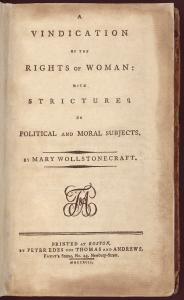
- January 21, 1793 – French Revolution: After being found guilty of treason by the French National Convention, Citizen Capet, Louis XVI of France, is guillotined in Paris
- May 25, 1793 – Reverend Fr. Stephen Theodore Badin (17 July 17, 1768 – April 21, 1853) was the first Catholic priest ordained in the United States. He spent most of his long career ministering to widely dispersed Catholics in Canada and in what became the states of Kentucky, Ohio, Indiana, Michigan, and Illinois.
- September 5, 1793 – French Revolution: The National Convention begins the 10-month Reign of Terror.
- October 16, 1793 – French Revolution: Marie Antoinette, the widowed queen consort of Louis XVI of France, is guillotined in the Place de la Révolution in Paris at the conclusion of a 2-day trial before the Revolutionary Tribunal.
Fever 1793 (2000) by Laurie Halse Anderson
During the summer of 1793, Mattie Cook lives above the family coffee shop with her widowed mother and grandfather. Mattie spends her days avoiding chores and making plans to turn the family business into the finest Philadelphia has ever seen. But then the fever breaks out.
Disease sweeps the streets, destroying everything in its path and turning Mattie’s world upside down. At her feverish mother’s insistence, Mattie flees the city with her grandfather. But she soon discovers that the sickness is everywhere, and Mattie must learn quickly how to survive in a city turned frantic with disease.- Amazon Description

- July 17, 1794– The sixteen Carmelite Martyrs of Compiègne are guillotined in Paris in the last stage of the French Revolution’s Reign of Terror.
- 1794 – Fr. Demetrius Augustine Gallitzin travels to Middleway, West Virginia, near Martinsburg to accompany Father Dennis Cahill in the investigation of a haunted house known locally as the Wizard Clip.
- January 14, 1795 – The University of North Carolina opens to students at Chapel Hill, becoming the first state university in the United States.
- February 7, 1795 – The Eleventh Amendment to the United States Constitution is passed.
May 12, 1795 – Urim and Thummim Congregationalist minister Ezra Stiles ( December 10, 1727 – May 12, 1795) dies. He was one of the founders of Brown University and is noted as the seventh president of Yale College (1778–1795). Yale College is the undergraduate college of Yale University. The Yale University coat of arms is the primary emblem of Yale University. It has a field of the color Yale Blue with an open book and the Hebrew words Urim & and Thummim inscribed upon it in Hebrew letters. Below the shield on a scroll appears Yale’s official motto, Lux et Veritas (Latin for “Light and Truth”). Lux et Veritas has been used for several university mottoes including Indiana University and the University of Montana.
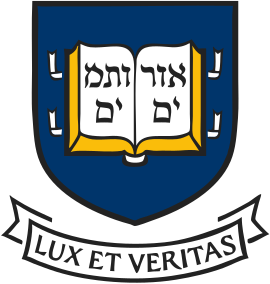
- August 22, 1795 – French Revolution: The Constitution of the Year III is ratified by the National Convention.

Gilbert Stuart – Lansdowne portrait of George Washington
16 Tennessee June 1, 1796
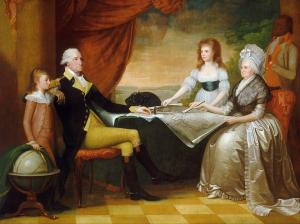
The Washington Family by Edward Savage (1789–1796).
- March 9, 1796 – Widow Joséphine de Beauharnais marries General Napoléon Bonaparte.
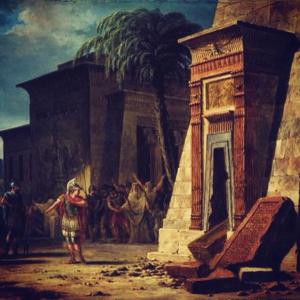
- April 2, 1796 – The only night of the supposed Shakespearean play Vortigern and Rowena (actually written by William Henry Ireland) ends in the audience’s laughter.
Alexander at the Tomb of Cyrus the Great, by Pierre-Henri de Valenciennes (1796)
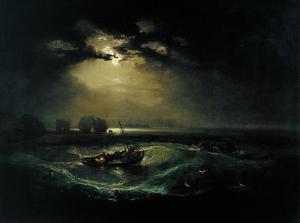
J. M. W. Turner – Fishermen at Sea (his first oil painting to be exhibited at the Royal Academy)
Second U.S. President
- March 4, 1797 – John Adams is sworn in as the second President of the United States,(March 4, 1797–March 4, 1801) with an uneventful transition of power from the administration of George Washington.
- February 10,1798 – The Pope is taken captive, and the Papacy is removed from power, by French General Louis-Alexandre Berthier.
- June 7, 1798 – Fr. Gabriel Richard P.S.S. (October 15, 1767 – September 13, 1832) becomes the assistant pastor at Basilica of Sainte Anne de Détroit (Sainte Anne’s Church)
July 1, 1798 – Egyptian Campaign: Napoleon disembarks his French army in Marabout Bay.
THE invasion of Egypt by Napoleon in the summer of 1798 was the first great seaborne invasion of the modern era. At the time, it may well have been the largest ever launched in the Western world—at least on a par with Xerxes’ vast Persian fleet which attacked Athens at the Battle of Salamis in 480 BC, and certainly double the size of the sixteenth-century Spanish Armada which attempted to invade Elizabethan England.
Yet this was not to be an entirely one-sided undertaking. Napoleon felt that there was also much for the expedition to learn from Egypt itself. The Sphinx and the pyramids were already known to Europe, but travelers had returned with tales of huge statues and amazing temples standing in the desert on the edges of the Nile valley in Upper Egypt. These appeared to be the remains of a mysterious civilization that had preceded the ancient Greeks, and in exploring these ruins the expedition would be seeking to discover the lost origins of Western civilization.
Paul Strathern, Napoleon in Egypt (2008) Random House Publishing Group

Egypt, and its extinct ancient culture, just across the Mediterranean Sea, had tantalized Europeans for centuries. They knew colossal relics of the oldest-known human civilization were concentrated along the Nile in crumbling piles between two vast, usurping deserts, amidst a modern population that professed faith in Islam. Europeans attached all sorts of inferences to this place, viewing it variously as the primal seat of natural law, the remains of a golden age of civilization, and a repository of lost magical knowledge. Few ever got close enough to really know.
The French did not invade Egypt in 1798, however, to solve historical mysteries. They sought colonial power and commerce, at the dawn of the modern global economy. When Napoleon led 34,000 soldiers and 16,000 sailors across the Mediterranean to the distant desert country, the young general undertook a bold (many said crazy) thrust in the ongoing competition among European countries for influence in distant parts of the globe.
Nina Burleigh, Mirage: Napoleon’s Scientists and the Unveiling of Egypt (2009) HarperCollins
- August 17, 1798 – Our Lady of La Vang refers to a reported Marian apparition at a time when Catholics were persecuted and killed in Vietnam. Though there is no official Vatican recognition of this event as a Marian apparition, on June 19, 1998, Pope John Paul II publicly recognized the importance of Our Lady of La Vang and expressed desire to rebuild the La Vang Basilica in commemoration of the 200th anniversary of the first vision. In 2012, the New Basilica was officially built with the endorsement from the Vietnamese government.
- October 2, 1798 – The Cherokee nation signs a treaty with the United States allowing free passage through Cherokee lands in Tennessee through the Cumberland Gap through the Appalachian Mountains from Virginia into Kentucky.
Just Before the Turn of Century in
1799
Jacques-Louis David-The Intervention of the Sabine Women
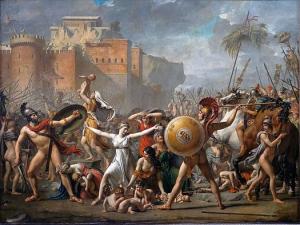
News of the World
- April 13 – The father of Charles and Mary Lamb dies; Charles becomes his sister’s guardian.
- May 1799 – Blessed Siméon Cardon and five other Cistercian monks are shot dead by French troops when the soldiers proceeded to sack their abbey including the church, where they broke open the tabernacle and scattered the consecrated hosts on the floor. They were killed when they tried to recover the hosts.
- July 15 – In the Egyptian port city of Rosetta, French Captain Pierre Bouchard finds the Rosetta Stone.
- November 9 – Napoleon overthrows the French Directory in a coup d’état, which ends the French Revolution.
- November 10 – A remnant of the Council of Ancients in France abolishes the Constitution of the Year III, and ordains the French Consulate with Napoleon as First Consul, with the Constitution of the Year VIII. The Napoleonic Era begins.
- December 31, 1799 – The Dutch East India Company‘s charter is allowed to expire by the Batavian Republic.
Publications Hot off the Press
- May 8 – The Religious Tract Society is established as an evangelical publisher in Paternoster Row, London; it continues as The Lutterworth Press into the 21st century.
Arrivals
- November 29 – Amos Bronson Alcott, American philosopher, educator and writer, father of novelist Louisa May Alcott (d. 1888)
Departures
- December 14 – George Washington (1732–1799) first President of the United States (April 30, 1789–March 4, 1797), dies at Mount Vernon, Virginia, aged 67. Did he die a Catholic?
John Adams (1735–1826) was in office as the 2nd president March 4, 1797–March 4, 1801)
Sanctifying Time
- August 29 – Pope Pius VI, at the time the longest reigning Pontiff of the Roman Catholic Church, dies as a prisoner of war in the citadel of the French city of Valence, after 24½ years of rule. Thus began a six-month period without a valid pope elected. This was due to the very unique logistical problems of Pope Pius VI being a prisoner and the conclave was being held in Venice and their being a deadlock among the cardinals voting.
The Sound of Music
- Ludwig van Beethoven – Piano Sonata in C Minor, Op. 13 (“Pathétique”); Piano Sonatas Nos. 9 and 10 (Op. 14, No. 1 and 2)
Next Time on
HOARATS
We venture into the 19th Century.
To Understand
What I love and How I Write About History
Hit the Link Above.
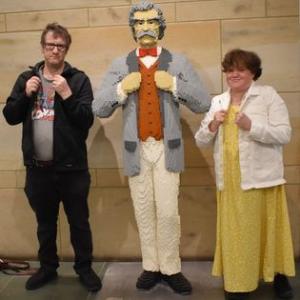
To understand about this particular series I’m writing about, please read
The Catholic Bard’s Guide To History Introduction
And to view a historical article click on




